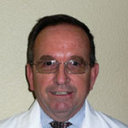Cyanide: an unreported cause of neurological complications following smoke inhalation.
Atslēgvārdi
Abstrakts
Although the combustion of natural and synthetic products can yield cyanide, its toxic role in residential fires is unclear. This case concerns a woman aged over 50 years who presented comatose, pulseless and apnoeic after a domestic fire. Cardiopulmonary resuscitation and on-site administration of 2.5 g hydroxocobalamin as an antidote to cyanide resulted in a return of spontaneous circulation. On admission to the intensive care unit, the patient was treated with hyperbaric oxygen for suspected carbon monoxide poisoning. In a blood specimen collected at the scene before hydroxocobalamin administration, blood cyanide and carbon monoxide levels were 68 µmol/l and 10.9%. On admission to hospital, plasma lactate was at 4.6 mmol/l. Brain scans revealed lesions which were confirmed 2 months later, consistent with the haemorrhagic necrosis often seen after poisoning by cyanide. These data suggest that smoke inhalation in a residential fire may cause cyanide poisoning. This case provides clinical, biological, analytical and brain imaging data supporting the hypothesis of the toxic role of smoke-induced cyanide poisoning which may result in neurological sequelae.


